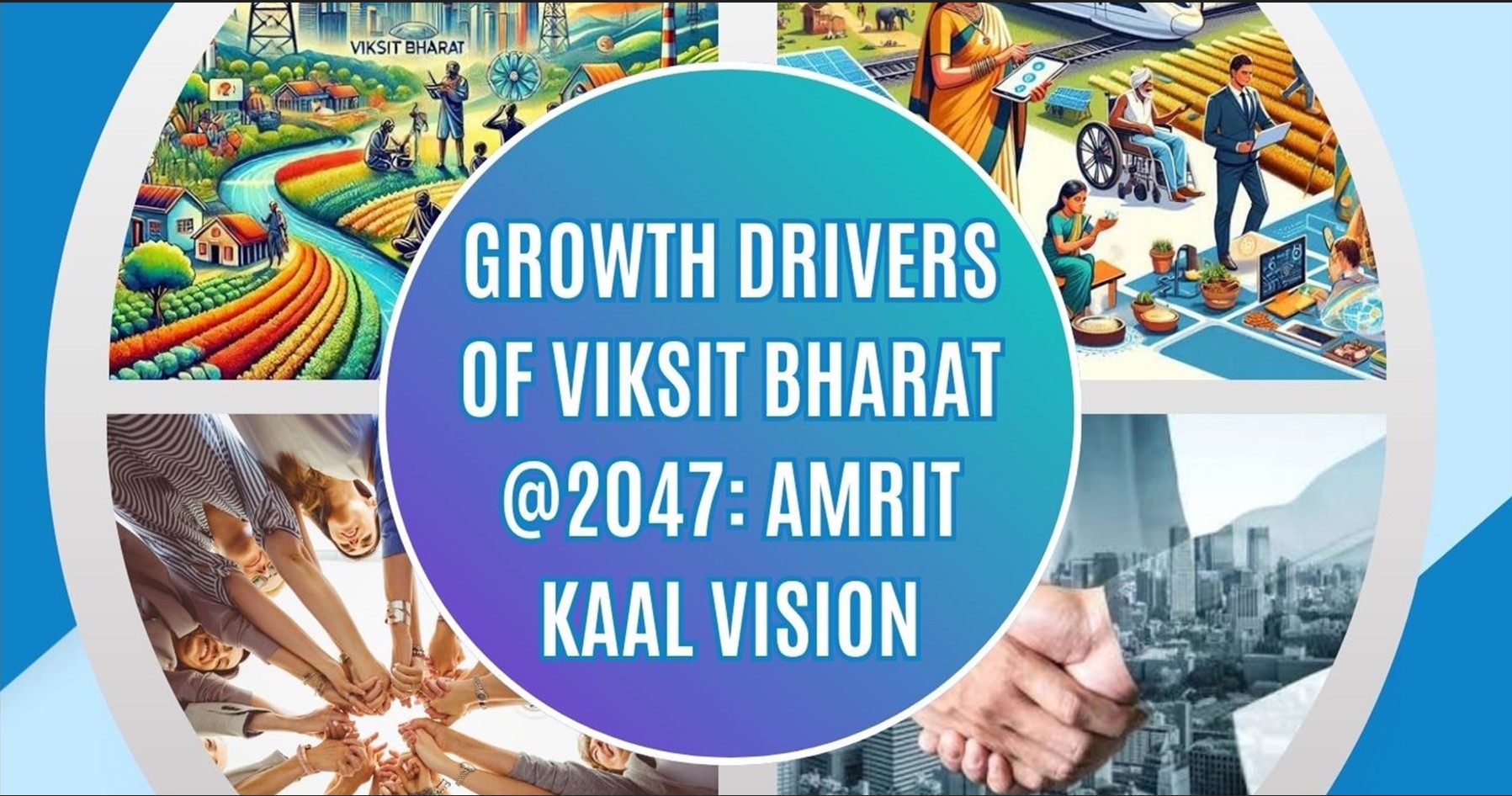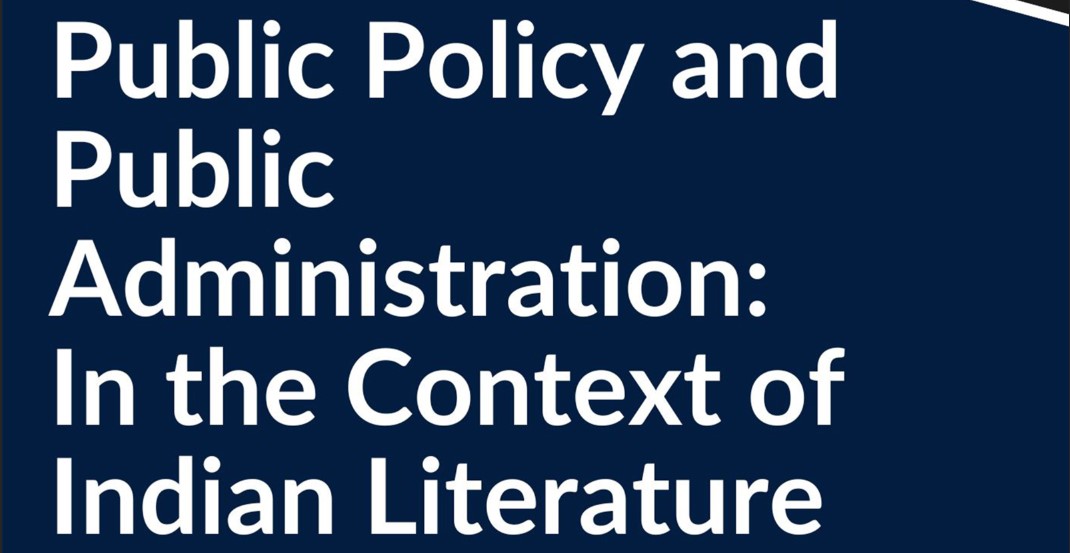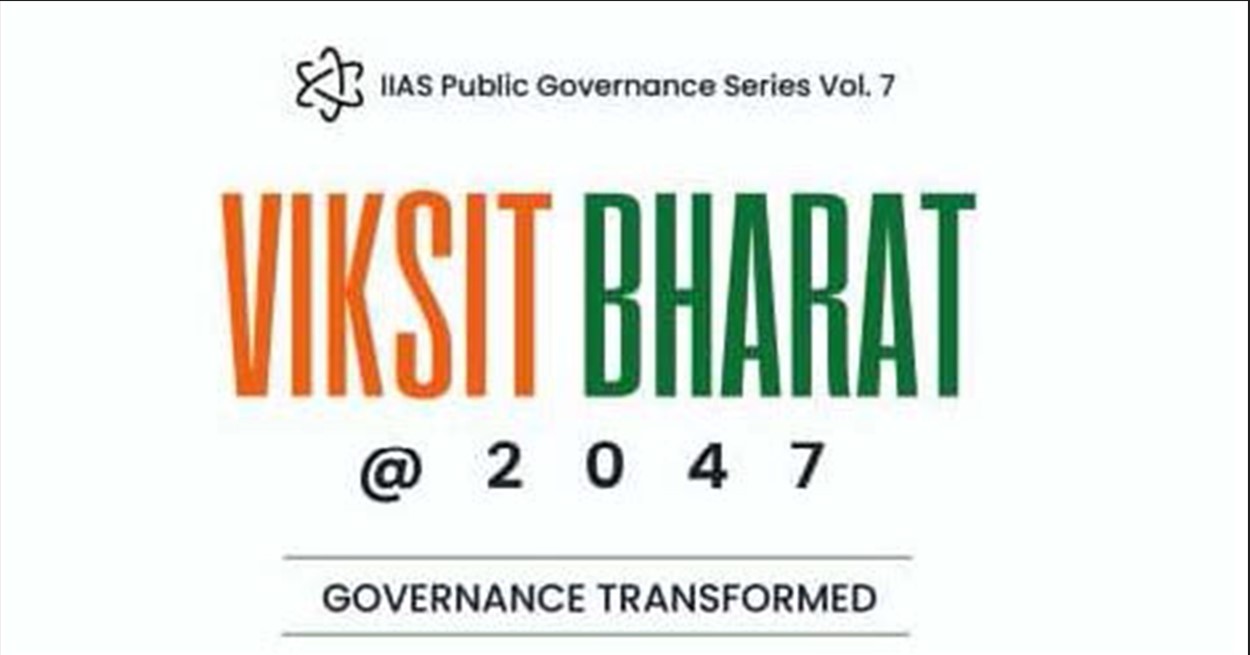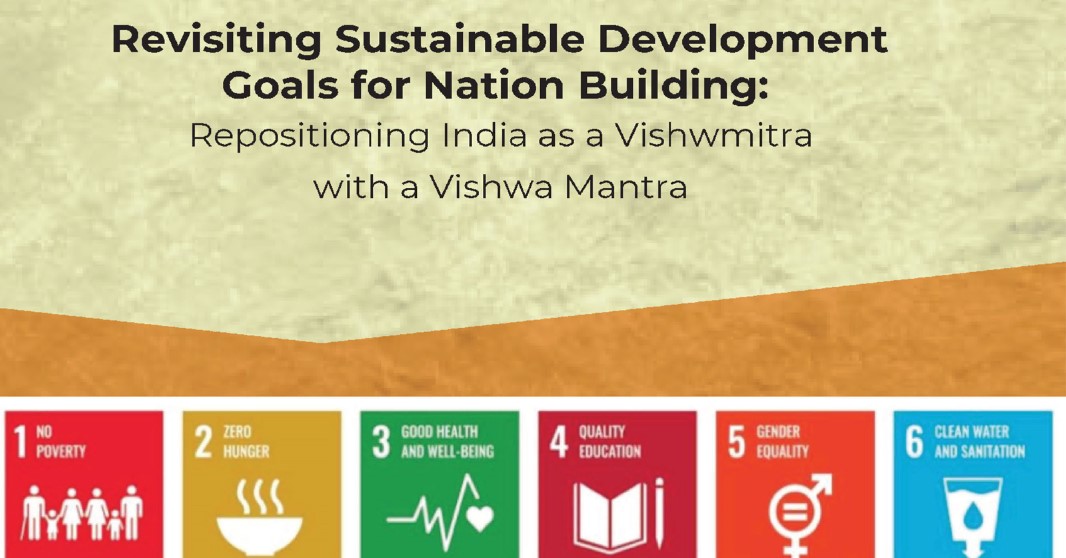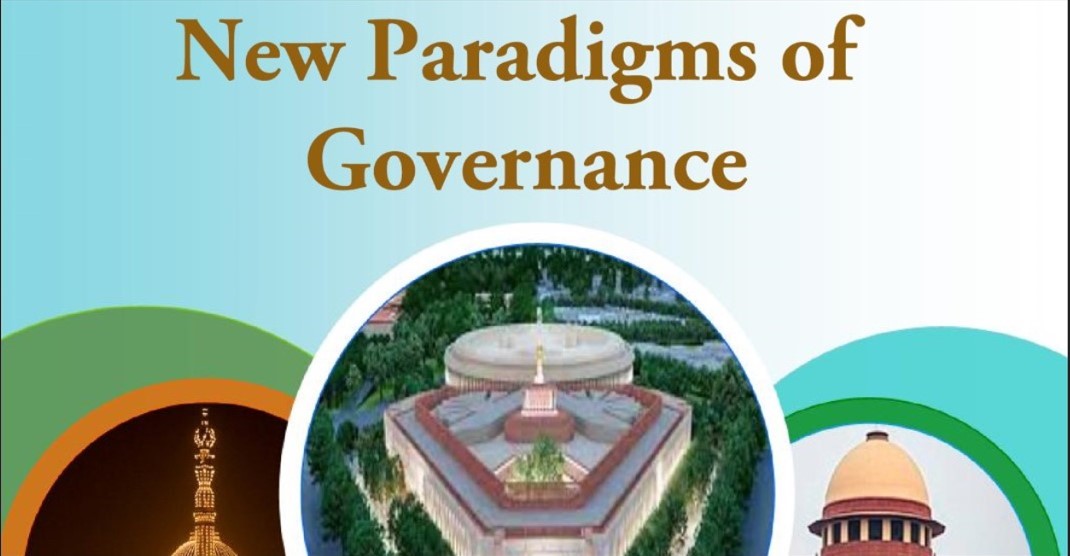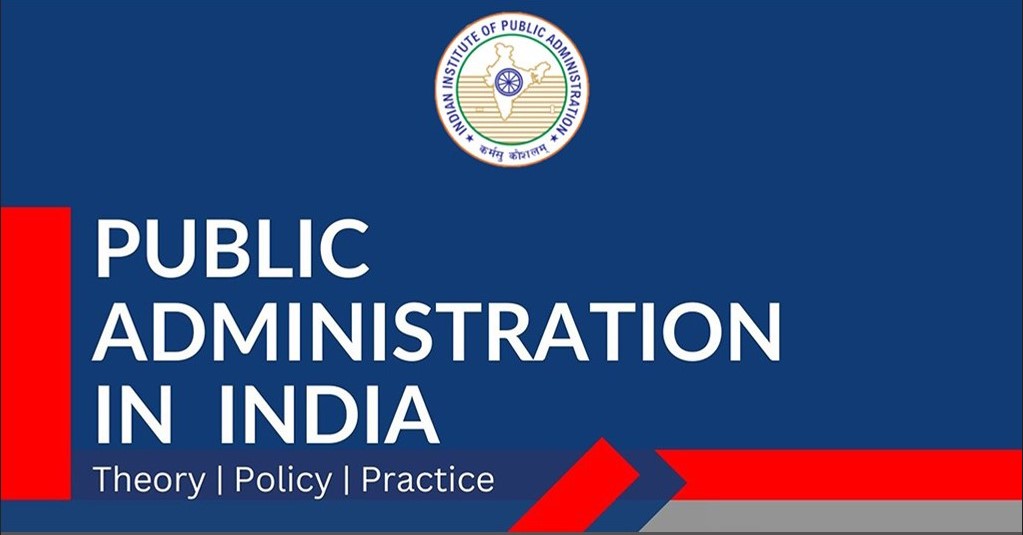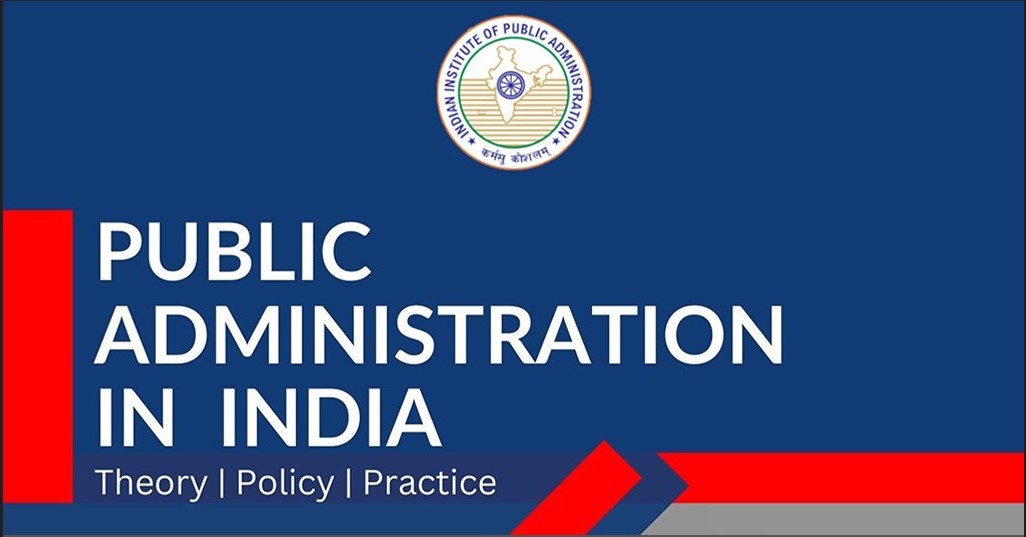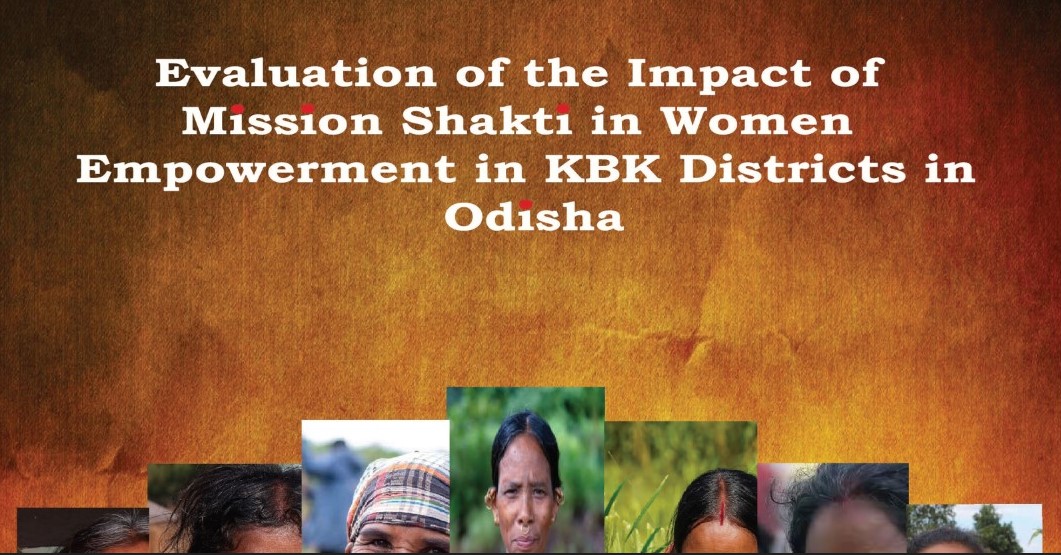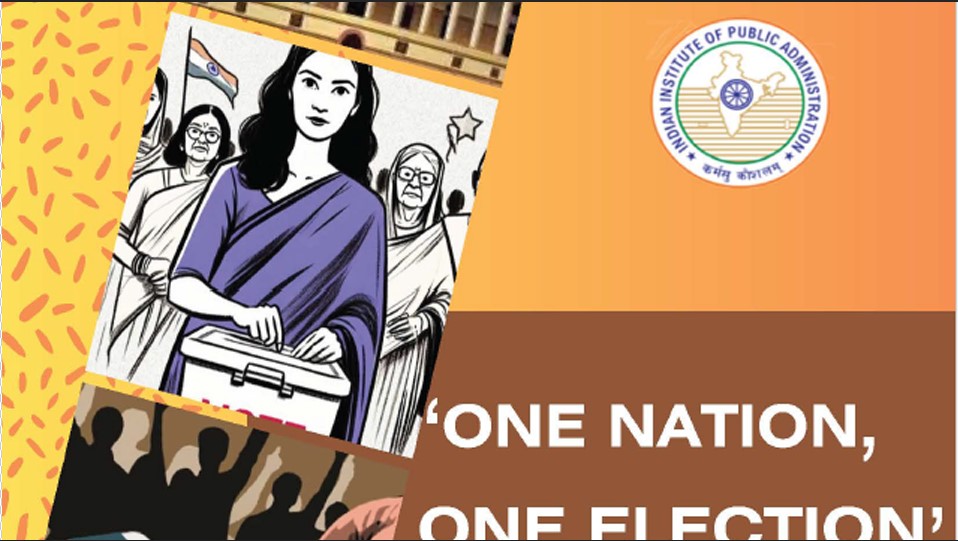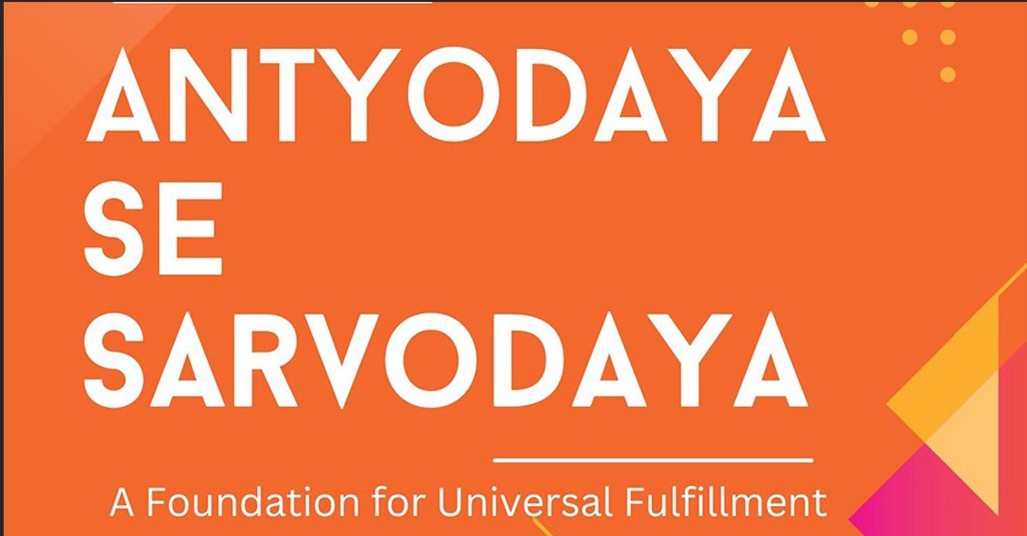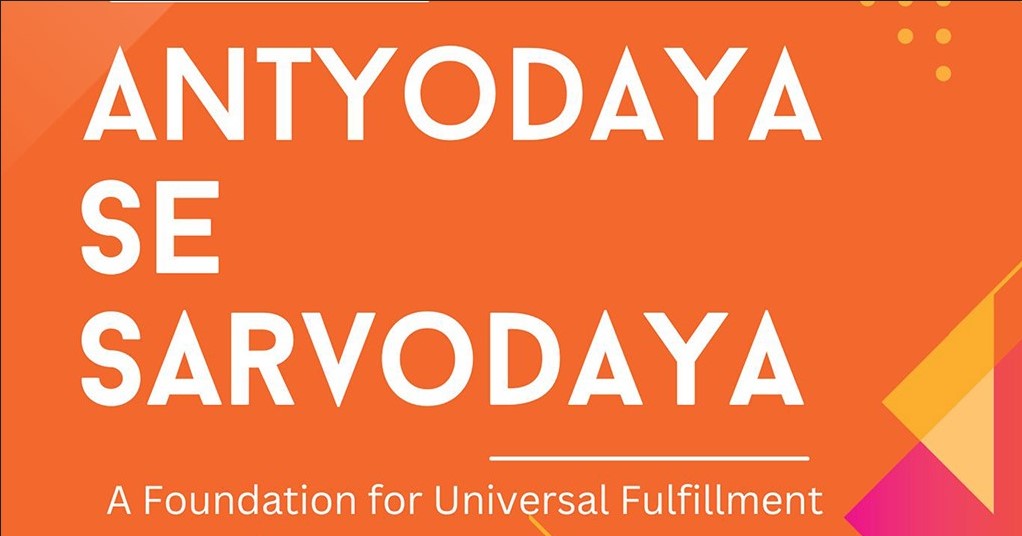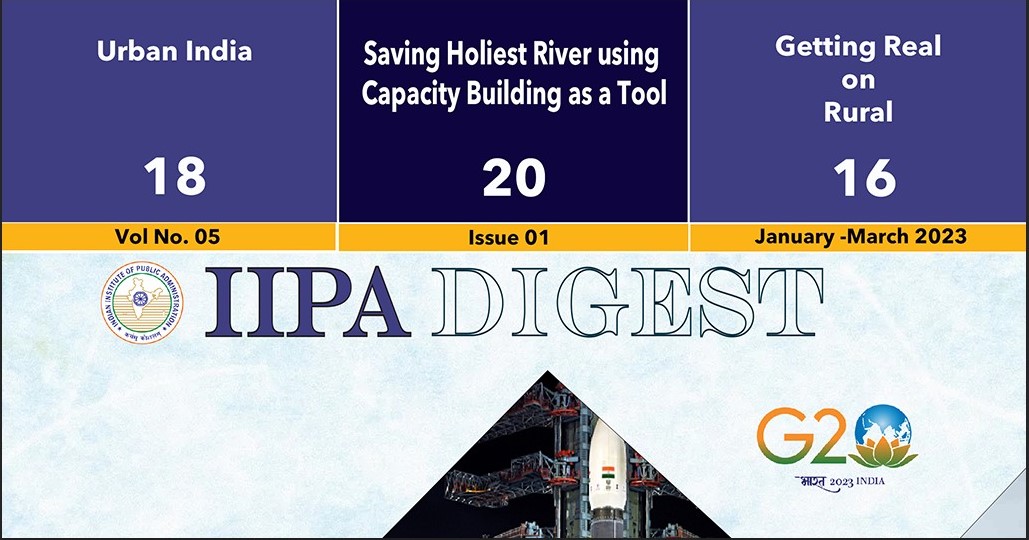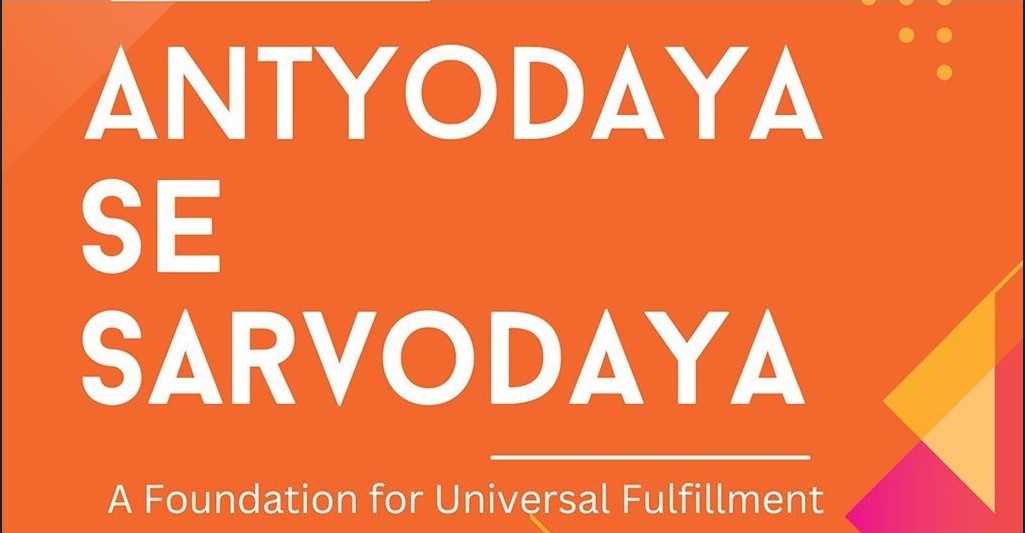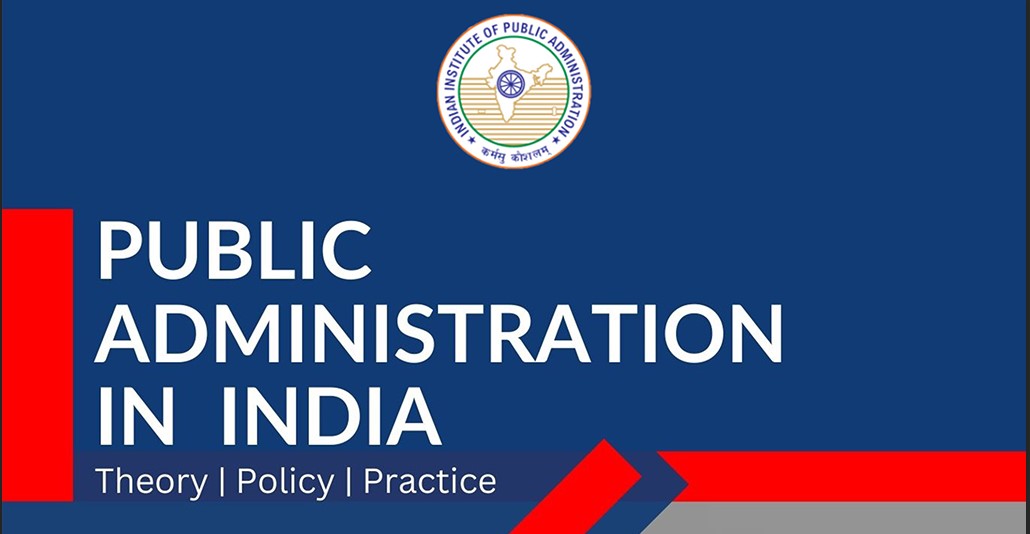From Grievance to Governance: AI, IoT, and Citizen Engagement in Transforming Rural Water Institutions through the Jhar-Jal Digital Platform
Abstract
This study critically examines the Jhar-Jal Portal, an ambitious state-led digital governance initiative deployed in Jharkhand, India, as an empirical site for exploring the intersection of technological innovation and participatory water governance in the Global South. Situated within the theoretical frameworks of digital-era governance, co-production, and ICT4D (Information and Communication Technologies for Development), the paper employs a qualitative case study methodology combining policy document analysis, stakeholder interviews, field observations, and real-time administrative data to assess the portal’s effectiveness in restructuring rural water service delivery. The analysis reveals that the portal operationalizes a layered architecture integrating Geographic Information Systems (GIS), Internet of Things (IoT), and Artificial Intelligence (AI), while embedding locally contextualized participatory mechanisms through Jal Sahiyas and community water forums. Key outcomes include a grievance resolution rate around 92%, enhanced institutional coordination, and measurable gains in gender-inclusive governance. The findings underscore the importance of digital platforms not merely as tools of administrative efficiency but as mediators of new accountability relationships and catalysts of procedural equity. The paper concludes by offering conceptual and policy insights into the scalability, risks, and long-term sustainability of such techno-social systems, contributing to broader discourses on digital transformation, inclusion, and state capacity in complex governance environments.
Keywords: E-Governance, grievance redressal, jhar jal, India digital governance, participatory water management.
1. Introduction
Effective water governance in developing nations is a pressing challenge, especially in rural regions characterized by inadequate infrastructure, resource mismanagement, and limited administrative reach. India, home to over 600 million rural residents, has long struggled to provide universal access to safe drinking water, a challenge compounded by groundwater depletion, water source contamination, climate variability, and service delivery bottlenecks. In response to these challenges, the Government of India launched the Jal Jeevan Mission (JJM) in 2019 to provide Functional Household Tap Connections (FHTCs) to every rural household by 2024. Within this national framework, the Government of Jharkhand, a state with a predominantly rural demographic (over 75%) and complex terrain, designed the Jhar-Jal Portal as a comprehensive platform to address issues of service delivery, transparency, and citizen engagement in the water and sanitation sector. The portal marks a significant departure from previous fragmented systems by offering a centralized, digital-first solution for monitoring, reporting, and grievance redressal in real time.
1.1 Problem Statement
Despite ambitious national initiatives and substantial investments, the rural water sector in Jharkhand continues to face numerous challenges: delays in FHTC installations, lack of data transparency, poor grievance redressal mechanisms, and minimal citizen participation. Traditional manual methods of reporting and tracking grievances were not only inefficient but often discouraged rural populations, especially in remote or conflict-affected regions, from voicing concerns. There was an urgent need for a scalable, reliable, and participatory framework that could bridge the gap between citizens and the state apparatus while ensuring efficiency in the planning, execution, and monitoring of rural water schemes. The Jhar-Jal Portal was conceptualized to address this very gap.
1.2 Objectives of the Study
This paper aims to:
• Examine the design, architecture, and implementation process of the Jhar-Jal Portal.
• Analyze its performance metrics and impact on citizen service delivery, particularly in grievance redressal and transparency;
• Explore how community engagement, particularly through Jal Sahiyas and Self-Help Groups (SHGs), contributes to the success of the portal;
• Identify key challenges, success factors, and scalability potential for other regions;
• Situate the case within the broader discourse of digital governance and ICT in public service reform.
1.3 Significance of the Study
This study contributes to global discussions on digital transformation in governance by offering an empirically grounded examination of a state-led innovation in India. The Jhar-Jal Portal is notable not only for its technological sophistication, including AI, IoT, and GIS integration, but also for its emphasis on grassroots engagement, particularly the empowerment of rural women as agents of change. By analysing this initiative, the paper also provides insights into the co-production of public services, where the state, citizens, and technology interact in a mutually reinforcing manner. The findings have relevance for scholars and practitioners in public administration, development studies, ICT4D, and water resource governance, especially in the Global South.
1.4 Structure of the Paper
The paper proceeds as follows: Section 2 presents a review of relevant literature and conceptual frameworks underpinning e-governance and participatory water management. Section 3 outlines the research methodology, including data sources and case study design. Section 4 presents key findings and performance metrics from the Jhar-Jal Portal. Section 5 discusses the broader implications, challenges, and comparative reflections. The paper concludes with recommendations for scaling and sustainability, as well as policy-level insights.
2. Literature Review
The conceptual foundation of this study lies at the intersection of digital governance, participatory development, and the evolving discourse on ICT-enabled public service delivery. Scholars and practitioners alike have underscored the transformative potential of e-governance tools in enhancing transparency, accountability, and citizen empowerment, particularly in resource-constrained and institutionally fragmented contexts (Heeks, 2006; Dunleavy et al., 2006).
2.1 e-Governance and Public Sector Innovation
The emergence of e-governance as a paradigm shift in public administration has been widely documented. Heeks (2006) argues that e-governance can correct institutional inefficiencies by introducing standardization, traceability, and automation into bureaucratic workflows. Dunleavy et al. (2006) propose the concept of “digital-era governance,” emphasizing the use of ICTs to reintegrate fragmented services and enable real-time responsiveness. These models advocate for citizen-centric service design, replacing hierarchical modes of administration with networked, interactive platforms. India’s Digital India programme further exemplifies the strategic integration of ICTs to streamline public service delivery, from welfare distribution to grievance redressal (Reddy & Prabhakar, 2020). The Jhar-Jal Portal aligns with these principles by embedding grievance redressal, financial tracking, and performance analytics within a unified digital infrastructure.
2.2 Participatory Governance and Co-Production
The co-production of public services, defined as the collaborative process through which citizens and state actors jointly produce outcomes, has gained increasing traction in governance literature. Ostrom (1996) identifies co-production as a mechanism to improve service efficiency and accountability, especially in contexts where state capacity is limited. Bovaird (2007) expands this view by highlighting how co-production fosters trust, leverages community knowledge, and enhances legitimacy.
In water governance, co-production is often realized through participatory rural appraisal (PRA), community-based monitoring, and institutionalized local roles (e.g., Jal Sahiyas in Jharkhand). Such mechanisms not only improve service delivery but also promote sustainability by embedding ownership at the grassroots level (Cleaver & Toner, 2006).
2.3 ICTs and Grievance Redressal Mechanisms
Digital grievance redressal systems have become increasingly prevalent as instruments of administrative accountability. Singh, Madon, and Sharanappa (2018) argue that when embedded in local bureaucracies, such systems can empower citizens, particularly marginalized groups, to articulate their rights. However, the success of these platforms depends on their usability, multi-lingual design, and accessibility for low-literacy populations. Jhar-Jal’s multi-channel approach, including toll-free numbers, mobile apps, and WhatsApp integration, directly responds to these challenges. The success of similar platforms such as MajiVoice in Kenya and mWater in Uganda has shown that grievance redressal systems, when backed by robust institutional support and real-time feedback loops, can significantly enhance service responsiveness (World Bank, 2016).
2.4 Technological Mediation and Governance
From a theoretical standpoint, scholars such as Latour (1999) and Verbeek (2005) have argued that technology is not merely an instrument but a mediator of social relations. In governance contexts, this means that digital tools shape not only the speed and efficiency of service delivery but also redefine accountability relationships, data power structures, and modes of citizen interaction. In the case of Jhar-Jal, the use of GIS, AI, and IoT technologies transforms the landscape of water governance. It enables state officials to move from reactive to predictive administration, while offering citizens visibility into system performance through dashboards and alerts. The portal thus becomes an agent of behavioural change in both bureaucratic and community settings.
2.5 Synthesis and Relevance
The reviewed literature converges on the importance of integrating ICTs with participatory frameworks to create resilient, responsive, and inclusive governance systems. The Jhar-Jal Portal is situated at this nexus. By marrying advanced technologies with grassroots engagement, it addresses the dual challenge of administrative opacity and citizen disempowerment in rural water governance. This study adds to the existing body of work by offering a contextualized, empirical examination of how these theories and frameworks play out in a real-world Indian setting marked by socio-economic marginality, digital divides, and political complexity.
3. Methodology
This study employs a qualitative case study methodology to investigate the development, implementation, and impact of the Jhar-Jal Portal in Jharkhand. Given the complexity of digital governance reforms and the socio-political context in which they unfold, a case study design allows for in-depth, contextualized exploration of the portal's evolution, stakeholder interactions, and outcomes. The methodology integrates both primary and secondary data sources, analysed through a thematic framework rooted in governance and ICT4D literature.
3.1 Case Study Design
The Jhar-Jal Portal was selected as a single, bounded case due to its comprehensive approach to rural water governance, innovative use of technology, and measurable impact across administrative and community levels. The unit of analysis includes both the technical architecture of the portal and its operational deployment across Jharkhand’s rural districts.
Figure 1: Jhar-Jal dashboard
3.2 Data Collection Methods
3.2.1 Document Analysis
A systematic review was conducted of official policy documents, project reports, implementation guidelines, user manuals, and dashboard analytics published by the Department of Drinking Water and Sanitation (DDWS), Government of Jharkhand, and Jharkhand Space Application Centre (JSAC). These documents provided insights into the design principles, architecture, features, and performance metrics of the portal.
3.2.2 Key Informant Interviews
Semi-structured interviews were conducted with:
Senior officials from DDWS are involved in the portal’s development and oversight
Field engineers and block-level officers are responsible for monitoring
Jal Sahiyas and SHG members are active in community engagement and grievance redressal
Beneficiaries from selected rural households who had used the portal
These interviews aimed to capture stakeholder experiences, challenges, and perceptions regarding the usability, inclusiveness, and efficiency of the portal.
3.2.3 Field Observations
Field visits were made to two districts, East Singhbhum and Latehar, to observe live dashboard use at the district level, grievance registration at Panchayat offices, and awareness meetings such as Jal Choupals. Observations focused on ICT adoption, gender participation, and alignment of portal usage with community needs.
3.2.4 Secondary Data Analysis
Quantitative data was obtained from the Jhar-Jal dashboard, which aggregates real-time information on:
Number of complaints received and resolved
Time taken for redressal
Number of water asset entries geo-tagged
Community training and meeting count
This data was analyzed to identify usage trends, performance bottlenecks, and geographic variation in implementation.
3.3 Analytical Framework
Thematic analysis was used to identify recurrent patterns across qualitative inputs. The framework was organized around the following analytical categories:
Technological infrastructure and integration (AI, GIS, IoT)
Citizen engagement and co-production
Institutional coordination and accountability
Barriers to implementation (digital literacy, geography, security)
Policy and governance implications
NVivo software was employed for qualitative coding, while Microsoft Excel was used to generate basic trend charts from dashboard metrics. The triangulation of multiple data sources ensured the validity and credibility of the findings.
3.4 Ethical Considerations
Informed consent was obtained from all interview participants. Anonymity was maintained for field-level beneficiaries and local officials to ensure openness. All data were used solely for academic analysis and were handled by ethical standards of qualitative research.
3.5 Limitations
While the case study provides rich insights, it is geographically limited to Jharkhand and may not capture contextual differences in other Indian states. Additionally, quantitative impact assessments (e.g., causal attribution to improved health outcomes) were beyond the scope of this qualitative design but are recommended for future studies.
4. Results and Analysis
The analysis of the Jhar-Jal Portal reveals significant advances in rural water governance through digital integration and participatory frameworks. The results presented here are derived from dashboard analytics, field observations, and stakeholder interviews. This section presents findings across key dimensions, including technological performance, grievance redressal efficiency, community engagement, and gender empowerment.
4.1 Grievance Redressal Performance
The portal recorded over 13,226 water-related grievances as of December 2024. Of these, 12,149 grievances (91.78%) were successfully resolved within the stipulated timeframe, reflecting a remarkable improvement in responsiveness and administrative accountability.
Figure 2: Status of grievance redressal in Jharkhand
Figure 3: Duration of complaints’ pendency
Average resolution time: Reduced from several weeks to less than 48 hours in most districts.
District variation: High-performing districts like Pakur, Godda, Simdega, and Bokaro recorded resolution rates above 95%, while a few LWE-affected areas faced occasional delays due to connectivity and security issues.
Figure 4: Grievance redressal% % across districts in stipulated time
Nature of complaints: Most grievances were related to handpump functionality, water quality, and supply interruptions.
4.2 Dashboard Monitoring and Real-Time Analytics
The Jhar-Jal Dashboard enables dynamic visualization of:
Active projects under JJM and SBM-G
Status of FHTC implementation across Gram Panchayats
Financial disbursement and utilization reports
Status of grievances by category, time, and geography
Administrators use the dashboard to prioritize field visits, flag low-performing zones, and initiate escalation protocols. The heatmap feature allows identification of high-grievance areas, enabling targeted interventions.
Figure 5: Heatmap of categories of water-related Grievances
Figure 6: Categories of water-related Grievances
4.3 GIS and IoT-Enabled Monitoring
GIS mapping has successfully geo-tagged over 90% of water assets, including pipelines, reservoirs, and handpumps. IoT-based sensors have been deployed at strategic points to monitor real-time parameters such as:
Water flow rates
Chlorination levels
Equipment functionality
Figure 7: Device Functionality
These systems feed data into the portal every 15 minutes, offering a granular view of infrastructure performance. As a result, preventive maintenance schedules have become more effective, reducing service downtimes.
Figure 8: Sensor-based water management
4.4 Financial Transparency and Fund Tracking
The portal includes a built-in financial tracking module that monitors fund disbursal, vendor payments, and project-wise expenditure. Officials reported a significant reduction in leakages and duplication of payments. Quarterly financial summaries are auto-generated and accessible to supervisory officers.
4.5 Community Engagement Metrics
As part of its participatory model, the portal supported the organization of:
351,156 Jal Choupals (village-level meetings)
14,595 water resource mappings involving citizens
Public grievance camps with multi-department representation
Interview data revealed that the visibility of complaint status displayed in Panchayat Bhawans greatly enhanced trust in the system and encouraged more citizens to report issues.
4.6 Women’s Empowerment Outcomes
The Jhar-Jal initiative prioritized gender inclusion by training 146,250 women, including Jal Sahiyas and SHG leaders, across 29,250 villages. Outcomes include:
Increased female participation in water monitoring committees
Improved decision-making autonomy in household water usage
Enhanced technical skills in using digital grievance tools
Several women reported feeling “more respected” in community forums due to their association with Jhar-Jal activities.
4.7 Institutional Coordination
Stakeholders noted improved collaboration between departments such as Rural Development, Public Health Engineering, Panchayati Raj, and IT. Standard Operating Procedures (SOPs) were codified to define interdepartmental workflows for grievance handling, monitoring, and reporting. Overall, the portal achieved its intended goals of digitizing accountability, empowering citizens, and bridging the last-mile gap in water service delivery. The convergence of digital infrastructure and community action has yielded scalable governance outcomes.
5. Discussion
The findings from the Jhar-Jal Portal initiative underscore the transformative potential of integrating digital technology with participatory governance frameworks in rural public service delivery. This section interprets the results presented earlier, drawing connections to broader theoretical insights and practical implications.
5.1 From Administrative Fragmentation to Systemic Integration
Before the portal’s inception, the water governance landscape in Jharkhand was marked by fragmentation across departments, unclear accountability chains, and the absence of centralized monitoring. The Jhar-Jal Portal has consolidated these functions, creating a unified platform that links grievance redressal, financial management, asset tracking, and community engagement. This reflects the digital-era governance principles outlined by Dunleavy et al. (2006), where re-integration of public services through technology reduces bureaucratic silos and enhances transparency.
5.2 Technological Innovation as a Driver of Predictive Governance
The integration of GIS, IoT, and AI technologies within the portal has enabled a shift from reactive to predictive governance. For instance, real-time monitoring of chlorine levels and water flow via IoT sensors allows administrators to anticipate infrastructure failures and address them proactively. This predictive capability reflects Latour’s (1999) assertion that technologies actively mediate and transform social processes in this case, the behavior of field officers and community users alike.
5.3 Digital Equity and Inclusion
While digital tools often risk exacerbating exclusion, the Jhar-Jal Portal appears to have mitigated this through a multi-channel grievance registration system (toll-free numbers, mobile apps, WhatsApp, and SMS). This aligns with Singh et al.’s (2018) findings that citizen-facing digital systems must be designed with accessibility in mind. Field observations revealed that Jal Sahiyas and SHGs often play the role of digital intermediaries, helping less-literate users navigate the complaint systems. This human-technology interface is crucial for ensuring inclusive governance.
5.4 Empowerment and the Gender Dividend
A notable outcome of the initiative is the large-scale training and participation of women in water governance. Over 146,000 women trained through the platform now play roles in monitoring, awareness generation, and grievance resolution. This supports arguments from Cornwall (2008) and Bovaird (2007) that participatory governance frameworks empower marginalized voices and foster democratic accountability. The rise of digitally literate female leaders in rural Jharkhand represents a significant social innovation.
5.5 Co-Production and Citizen-State Synergy
The success of Jhar-Jal hinges not merely on technological sophistication but on its ability to foster the co-production of services. Citizens, through Jal Choupals and complaint systems, provide data, feedback, and surveillance. The state, in turn, responds with accountability, repairs, and performance updates. This reciprocal relationship embodies Ostrom’s (1996) notion of co-production, where community involvement enhances the efficiency and legitimacy of service delivery.
5.6 Governance Outcomes and Scalability Potential
The grievance resolution rate exceeding 92%, along with a significant reduction in resolution time, is tangible indicators of improved governance. However, the scalability of the Jhar-Jal model depends on several enabling factors:
Strong political will and bureaucratic leadership
Interdepartmental collaboration with defined SOPs
Continuous training and digital capacity-building at the local level
Sustained investment in technology infrastructure and data security
5.7 Comparison with Other Models
When compared to earlier water governance reforms like Swajaldhara and the Total Sanitation Campaign, Jhar-Jal distinguishes itself through its robust integration of ICTs with participatory tools. Unlike Swajaldhara, which was heavily dependent on community funding, or CLTS models focusing solely on behavioural change, Jhar-Jal brings together infrastructure, data, and community voice in a digitally networked ecosystem. Its architecture also resonates with global platforms such as Kenya’s MajiVoice and Uganda’s mWater, while introducing advanced AI and dashboard visualization unique to the Indian context.
Figure 9: AI-based water distribution Management system
The Jhar-Jal Portal exemplifies a mature model of digital governance, one that balances technological determinism with human agency, centralization with decentralization, and efficiency with inclusion. The discussion reinforces that for e-governance systems to be effective, they must be embedded in social structures, responsive to contextual realities, and designed for co-creation with the communities they serve.
6. Challenges and Constraints
Despite the significant successes achieved by the Jhar-Jal Portal, its implementation was not without challenges. These constraints, ranging from infrastructural barriers to socio-political complexities, offer critical lessons for future digital governance initiatives.
6.1 Geographical and Topographical Barriers
Jharkhand’s rugged terrain, forested regions, and lack of last-mile connectivity in many tribal and remote villages posed serious challenges to the deployment and maintenance of digital infrastructure. In several districts, especially those categorized under Left Wing Extremism (LWE) zones, hardware installation and training programs had to be suspended or delayed due to safety concerns.
6.2 Digital Literacy and Accessibility
A key constraint was the low level of digital literacy among rural residents, particularly women and the elderly. Although multi-channel access modes were introduced, the effective use of dashboards, grievance apps, or SMS-based reporting often required the intervention of intermediaries such as Jal Sahiyas or local NGOs. This digital divide risked reinforcing dependency rather than fostering autonomy among users.
6.3 Infrastructural Gaps and Connectivity Issues
Unreliable electricity supply and erratic mobile internet connectivity were cited as major bottlenecks in the continuous functioning of IoT devices and real-time grievance reporting. Inconsistent data synchronization sometimes led to duplicate entries or delayed responses, especially in block offices where digital servers lacked backup systems.
6.4 Interdepartmental Coordination
While the portal was designed for convergence, coordination between departments such as the Public Health Engineering Department (PHED), Panchayati Raj, and Rural Development required extensive negotiation. Differences in reporting formats, data-sharing hesitations, and varied digital maturity levels across departments created inefficiencies in integrated monitoring.
6.5 Human Resource Constraints
The success of Jhar-Jal depended on local government officials, engineers, and data entry operators who often juggled multiple responsibilities. In some districts, the shortage of trained personnel slowed down the grievance redressal cycle. Interviews revealed that officers were overburdened, and replacements for transferred staff were often delayed, affecting continuity.
6.6 Political and Bureaucratic Buy-In
Initial resistance to change from both bureaucrats and elected representatives accustomed to discretionary, manual decision-making posed obstacles to institutionalizing digital workflows. It required sustained advocacy and top-level political support to convince stakeholders of the long-term benefits of automation and transparency.
6.7 Data Privacy and Cybersecurity Risks
As the portal scaled and collected increasing volumes of user data, concerns about data misuse, hacking vulnerabilities, and the absence of a comprehensive state-level data protection policy became prominent. Although security protocols like multi-factor authentication and centralized encryption were introduced, the lack of regular audits and technical staff for cybersecurity monitoring remained a constraint.
6.8 Sustainability and Maintenance Costs
Post-implementation, the cost of maintaining hardware, updating software, and training new batches of Jal Sahiyas placed a strain on recurring budgets. While initial funding was project-based, the long-term financial sustainability of the portal is dependent on embedding it within state budget allocations and integrating it with other digital public goods.
Table 1: Key Constraint in Jhar-Jal Implementation
While the Jhar-Jal Portal succeeded in delivering improved governance outcomes, addressing these systemic and operational constraints is crucial for ensuring sustainability and replicability. Understanding these barriers also enables policymakers to anticipate risks and design mitigation strategies for future digital interventions in similarly challenged regions.
7. Policy Implications
The Jhar-Jal Portal stands as a compelling example of how digital governance, when grounded in participatory frameworks and supported by robust institutional mechanisms, can radically transform public service delivery in rural contexts. By integrating advanced technologies such as Geographic Information Systems (GIS), Internet of Things (IoT), and Artificial Intelligence (AI), the portal has addressed longstanding challenges in water supply monitoring, grievance redressal, and citizen engagement in Jharkhand. The results underscore not only improved operational efficiency evident from the over 92% grievance redressal rate and dramatic reductions in response times but also deeper socio-political impacts. These include the empowerment of women as water stewards, enhanced interdepartmental coordination, and renewed trust between rural communities and local governments. Importantly, the initiative bridges the digital divide by adopting inclusive design practices and leveraging grassroots intermediaries like Jal Sahiyas and Self-Help Groups.
7.1 Mainstreaming Digital Platforms in Rural Governance
State governments should consider institutionalizing similar platforms across sectors such as rural health, education, and agriculture, embedding digital tools within everyday governance rather than treating them as standalone projects.
7.2 Strengthening Capacity Building at the Grassroots
Sustained training and digital literacy programs are essential to ensure long-term adoption. Jal Sahiyas and local government officials should be continuously supported to adapt to evolving technology and administrative workflows.
7.3 Budgetary Support and Fiscal Sustainability
The long-term success of such digital platforms depends on regular budgetary allocations for maintenance, upgrades, and personnel. States should explore converging resources from centrally sponsored schemes like Digital India, JJM, and SBM-G.
7.4 Ensuring Data Privacy and Cybersecurity
With increasing reliance on digital platforms, there is a need for robust state-level data protection frameworks, regular cybersecurity audits, and citizen awareness programs around data rights and privacy.
7.5 Scalability through Modular Design
The modular architecture of the Jhar-Jal Portal offers a replicable model for other Indian states and countries facing similar governance challenges. Its design allows for easy integration with mobile apps, SMS gateways, GIS systems, and AI-based analytics, making it adaptable to diverse contexts.
7.6 Monitoring and Evaluation Frameworks
Governments should incorporate continuous monitoring and third-party evaluation mechanisms to assess impact, identify gaps, and iteratively improve platform functionality.
8. Conclusion
The Jhar-Jal Portal represents a significant leap in reimagining public service delivery through the convergence of digital innovation and participatory governance. By integrating real-time data analytics, GIS-enabled asset tracking, AI-supported monitoring, and multi-channel grievance redressal systems, the platform has fostered a responsive, accountable, and citizen-centric framework for rural water management in Jharkhand. Its achievements extend beyond operational efficiency, reflected in a 92% grievance resolution rate, to encompass measurable socio-political outcomes, particularly the empowerment of over 146,000 women who now play pivotal roles in water governance. This underscores the potential of technology not as an end in itself, but as an instrument for fostering inclusion, transparency, and institutional responsiveness in underserved regions. Crucially, the Jhar-Jal initiative signals a broader shift in the architecture of governance from hierarchical modes of delivery to models grounded in co-production and community ownership. It affirms that the success of digital public infrastructure hinges not solely on technological sophistication but on sustained institutional alignment, policy support, and inclusive design. As India and other emerging economies confront persistent governance deficits, the Jhar-Jal experience offers more than a replicable intervention it articulates a normative vision for statecraft in the digital age, one where citizens are not passive recipients but active architects of democratic accountability and developmental equity. As India and other developing nations seek scalable models for resilient governance, the Jhar-Jal experience offers more than a template it offers a vision of a future where the state listens, learns, and leads with its people, not merely for them.
References
1. Bovaird, T. (2007). Beyond engagement and participation: User and community co-production of public services. Public Administration Review, 67(5), 846–860.
2. Cleaver, F., & Toner, A. (2006). The evolution of community water governance in Uchira, Tanzania: The implications for equality of access, sustainability, and effectiveness. Natural Resources Forum, 30(3), 207–218.
3. Cornwall, A. (2008). Unpacking 'participation': Models, meanings and practices. Community Development Journal, 43(3), 269–283.
4. Dunleavy, P., Margetts, H., Bastow, S., & Tinkler, J. (2006). Digital era governance: IT corporations, the state, and e-government. Oxford University Press.
5. Heeks, R. (2006). Implementing and managing eGovernment: An international text. SAGE Publications.
6. Latour, B. (1999). Pandora’s hope: Essays on the reality of science studies. Harvard University Press.
7. Ostrom, E. (1996). Crossing the great divide: Coproduction, synergy, and development. World Development, 24(6), 1073–1087.
8. Reddy, K. V., & Prabhakar, T. V. (2020). Role of Digital India initiative in transforming e-governance in India. International Journal of Management, 11(12), 1105–1113.
9. Singh, R., Madon, S., & Sharanappa, S. (2018). Digital technologies and transparency in service delivery: A case study of an Indian government initiative. Information Systems Journal, 28(3), 503–526.
10. Verbeek, P. P. (2005). What things do: Philosophical reflections on technology, agency, and design. Penn State Press.
11. World Bank. (2016). World development report 2016: Digital dividends. World Bank Publications. https://www.worldbank.org/en/publication/wdr2016
Leave a comment
More articles from Governance & Polity




